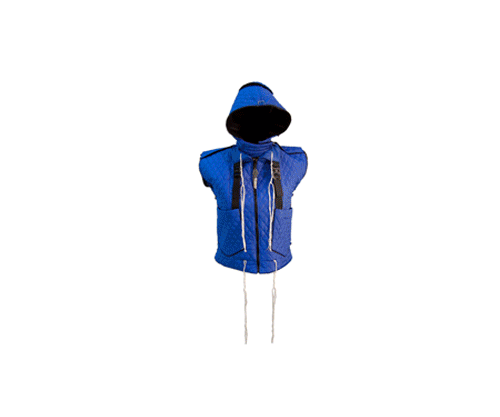 |
Date Summer/Fall 2006
Place Jerusalem-Ramallah, IS/Pal
Medium Fashion design
Show Group Show Liminal Spaces / Grenzršume, Gallery for Contemporary Art Leipzig, Germany / Oct. 28, 2006 - Jan. 21, 2007
Organizers Exhibition is a part of the project Liminal Spaces, organized as a collaboration of the Israeli Centre for Digital Art Holon, the Palestinian Association for Contemporary Arts PACA and the University of the Arts Berlin
Curators Galit Eilat, Reem Fadda, Philipp Misselwitz
Show Participants Artists: Jumana Emil Abboud, Sameh Abboushi, Azra Aksamija, Ayreen Anastas und Rene Gabri, Yochai Avrahami, Yael Bartana, Peter Friedl, Hagar Goren, Inass Hamad, Sandi Hilal and Alessandro Petti, Khalid Horani, Sabine Horlitz and Oliver Clemens, Ligna, Suleiman Mansour, Oren Sagiv, Sala-Manca Group, Miri Segal, Sean Snyder, Superflex, Simon Wachsmuth
Credits Conceptual cotributor: Deniz Turker
Production: Azra
Aksamija and Evelyn Funes Photographs by Azra Aksamija © 2006
|
|
|
Frontier Vest The Frontier Vest hybridizes different religious equipment and a contemporary vest design. This wearable prototype lends itself for different purposes, both sacred and secular. Pointing at the shared histories and belief systems of Judaism and Islam, the Frontier Vest can be transformed either into a tallit, a Jewish prayer shawl, or into an Islamic prayer rug. Both possibilities render very personal objects that devoted believers use in religious rituals. Originating in the nomadic life of Bedouins, and informed by the historic experience of exodus, the Frontier Vest also represents a minimal wear useful for a contemporary refugee. While the vest can be worn by both men and women, the equivalent use in Jewish and Islamic religious sermons is a task to be negotiated within the individual religious communities in the future.
While Judaism, Christianity and Islam share the belief in one God, belonging to one implies a level of exclusion from the others. Based on different religious practices, socio-psychological boundaries often generate spatial ones, which in turn reinforce these divisions further. The Frontier Vest allows for individual expressions of different belief systems. This individual wearable architecture can also be combined to generate a communal space. For this, it needs a congregation of minimally ten in Judaism (minyan), two in Islam (masjid) and three in Christianity. Yet more importantly, this individual territory can only become collective through overcoming the fear of the mutual otherness.
|
||